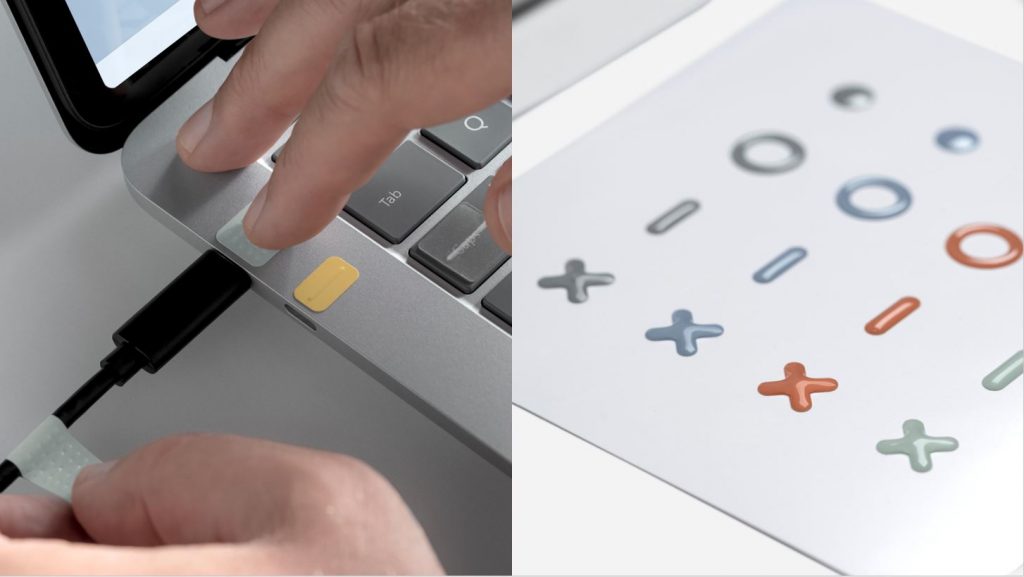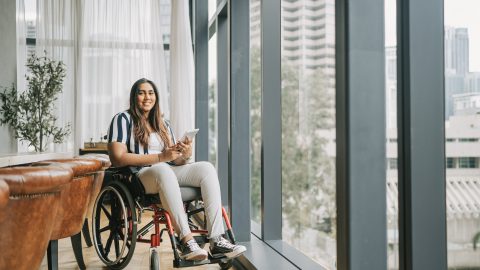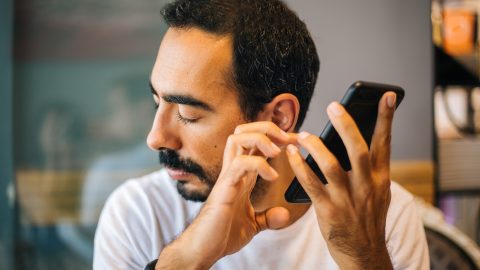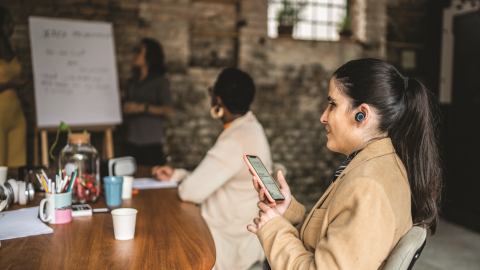Surface Adaptive Kit – designed with accessibility in mind and in collaboration with the disability community
In late September, we were excited to announce the Surface Adaptive Kit was coming soon. Today, the kit officially launches and we want to take a moment to celebrate the people, community, and stories that helped us create the labels, indicators, and openers that empower anyone to make their Surface device a little easier to use.
Accessible by Design
A few years ago, we collaborated with gamers across the disability community to develop the Xbox Adaptive Controller, which empowered more people to play the games they love. On that journey, we learned from the community’s shared experiences, which reinforced the importance of ensuring the products we create are accessible by design. To build on our learnings, in June 2020 we invited the disability community into Microsoft’s Inclusive Tech Lab with one goal; to learn more about how they use their Microsoft Surface PC devices and understand what challenges they experience. Over the course of a week, teams of designers, engineers, and more participated in a virtual Inclusive Design Sprint, to engage directly with both customers with disabilities such as low vision, Cerebral Palsy, and ALS, as well accessible design experts, such as Open Style Lab, a non-profit organization committed to making style accessible for everyone.


“We knew that some customers with disabilities were already augmenting their Surface devices to make it easier for them to use. Ultimately, we believed those augmentations should not only empower our customers to be more productive but be premium like their Surface. The feedback from the participants of the Inclusive Design Sprint enabled us to identify some of the shared challenges customers experienced when interacting with their devices, and those became the foundational pillars for the Surface Adaptive Kit,” said Bryce Johnson, Sr. UX Researcher for Accessibility. “As with our work on the Xbox Adaptive Controller, we believe in ‘Nothing About Us, Without Us’, so designing the kit in partnership with the disability community was very important.”
Staying true to Microsoft’s Inclusive Design Principles was priority number one throughout the creation of the Surface Adaptive Kit. During the development of the kit, we maintained a beta-testing community of Microsoft employees who identified with a disability, so that ongoing feedback could be incorporated into the design and functionality of the kit. One of the great surprises was hearing about the different ways the kit empowered the testing community in ways that we didn’t even imagine.
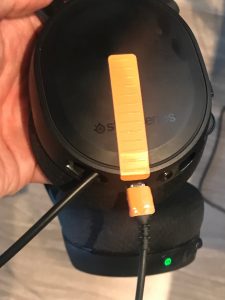

“I first tried the kit on my keyboard and put labels on certain keys to make it easier for me to orient myself when typing. Then I got creative and started trying them on other things around my house where I thought they’d be just as useful. For example, I put some labels on my microwave to help locate buttons, as well as on my wireless headphones, so I can quickly align those pesky USB connectors for charging. I’m even thinking about trying them on my washer and dryer next!” said Brett H, a beta tester and Sr. Program Manager at Microsoft.
The feedback from our internal community supported our efforts to make the kit accessible by design, as we worked in partnership to help make the package easier to open for as many people as possible, as well as using braille alongside the QR code, so it can be quickly located and read. Beyond Microsoft employees, we collaborated with external partners in the community such as Craig Hospital (Denver, CO) to gather feedback that helped us refine elements of the kit. Our team learned so much from the community and we hope the collective effort of the Surface Adaptive Kit empowers anyone to be more productive.
Meet Joshua
As we prepared for launch, we partnered with our marketing teams to develop a photoshoot brief that not only embodied the adaptive design of the kit but more importantly, the community who helped create it. The creative team found amazing talent to work with, and together they collaborated to bring the experiences of the kit to life. Over the course of the shoot, the talent was given the freedom to explore the kit and demonstrate using it in the ways that felt most helpful to them.
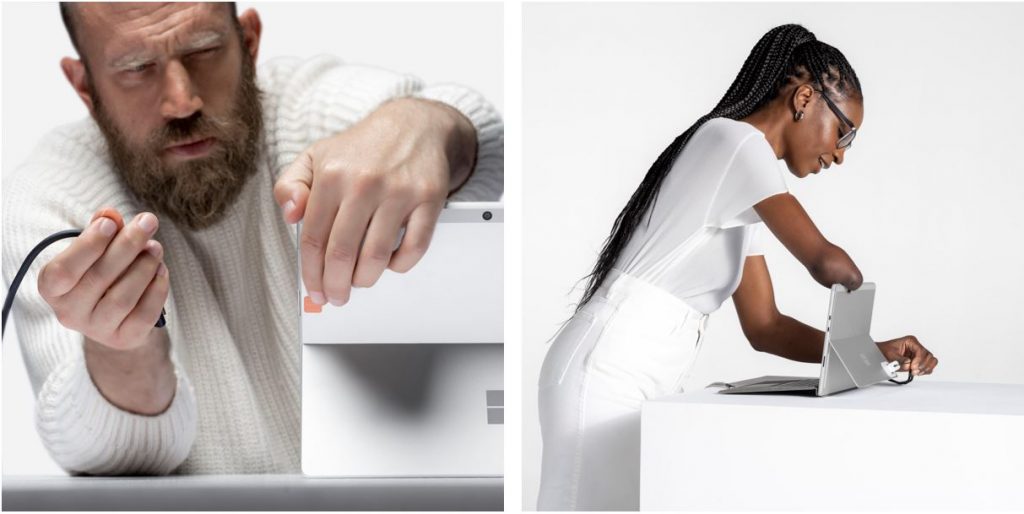
This organic process often led to the talent sharing stories of personal experiences, some of which were about getting things done in their daily routines and others regarding hobbies they’re passionate about. Joshua, who is blind, shared how he feels empowered throughout his day-to-day as an accessibility tech consultant, surfing champion, and martial artist. After the shoot, we caught up with Joshua to spend the day with him in his element…
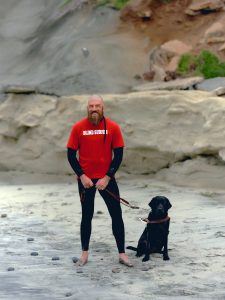
Joshua lives in Southern California and goes into each day with what he describes as an adventure mind philosophy, which empowers him to be ready to take on anything that comes his way. “Life is full of difficulty, and if you don’t do anything difficult on purpose, then you’re often rocked by life events… For me when I go surfing and even if I have an awful day where I catch nothing and the ocean is beating me up… I feel better the rest of the day, my mind is clearer because I did something that’s difficult and that changes my confidence in myself because I know I can do these things that most people think are impossible.”
Growing up, Joshua was mostly blind, but during his sophomore year of high school, an accident left him completely blind. Driven by his philosophy, he’s gone on to win US national championships in surfing and is an active member of the martial arts community, but he has even bigger ambitions. “Surfing is now on track to be in the Paralympics in 2028… I plan to be the first gold medalist, totally blind surfer in the Paralympics. I’ve been teaching martial arts professionally, but I would like to…build a non-profit where disability, mental health struggle, whatever the case may be, is not a barrier towards martial arts training.”

When he’s not actively pursuing his passions, Joshua works with companies regarding their accessibility technology. After the first photoshoot, Joshua took a sample of the kit home to try out and shared his thoughts “What’s really neat about it is that there’s a range of stickers, and each person, what’s going to make sense to their mind, it’s going to be a little different… and you can customize it. I have a bunch of different stickers on my tablet, my Surface here, that help me to find those keys quickly. And I can put them on various things like my coffee maker… It’s nice to be able to get that information a little quicker… it’s kind of subtle, but prominent enough that it can be beneficial and useful.”

Just The Beginning
We are excited to share the Surface Adaptive Kit with the community, but this is only the first milestone on a long journey we will take together. As we strive to make all our accessories more accessible by design, we will continue to seek feedback, listen and learn, so we create experiences together that make using your Surface and Windows PCs easier to use.
The Surface Adaptive Kit is now available for purchase in select markets and you can find it online in the Microsoft Store, or by contacting your Surface Commercial partners, and on 12/14 we will expand availability worldwide.
Learn more about the Surface Adaptive Kit and different ways it can be used: Link
Share Feedback and Ideas with our Inclusive Tech Lab:
Twitter: @inctechlab
Email: [email protected]
TikTok: @msft_inclusive_tech_lab
Instagram: @msft_inclusive_tech_lab
YouTube channel

